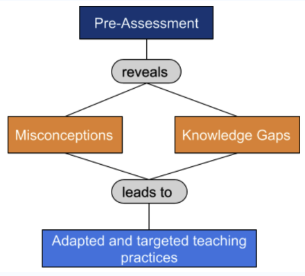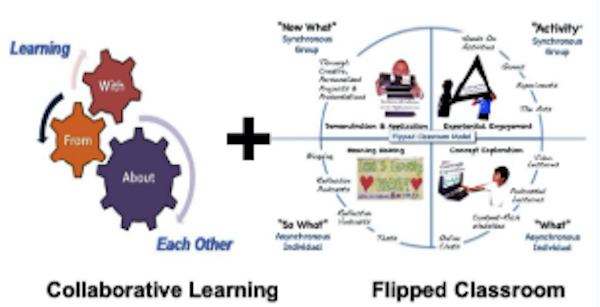successes
Formative Assessment Strategies for Healthcare Educators
Formative assessments are those lower-stakes assessments that are delivered during instruction in some way, or 'along the way' so to speak. As an educator, it was always a challenge to identify if or what my students were understanding, what skills they had acquired, and if or how I should adjust my teaching strategy to help improve their learning. I’m guessing I am not alone with this. In medical education, the pace is so fast that many instructors feel like they do not have the time to spare in giving assessments ‘along the way’, but would rather focus on teaching everything students need for the higher-stakes exams. With medical education being incredibly intense and fast, this is completely understandable. However, there must be a reason so much research supports the effectiveness in administering formative assessments….along the way.
One reason formative assessments are proven so useful is they provide meaningful and useful feedback; feedback that can be used by both the instructor and students.
Results from formative assessments should have a direct relation to the learning objectives established by the instructor, and because of this, the results provide trusted feedback for both the instructor and student. This is incredibly important. For instructors, it allows them to make immediate adjustments to their teaching strategy and for the students, it helps them develop a more reliable self-awareness of their own learning. These two things alone are very useful, but when combined, they can result in an increase in student outcomes.
Here are 5 teaching strategies for delivering formative assessments that provide useful feedback opportunities.
1. Pre-Assessment:
Provides an assessment of student prior knowledge, help identify prior misconceptions, and allow instructors to adjust their approach or target certain areas
- When instructors have feedback from student assessments prior to class, it is easier to tailor the lesson to student needs.
- Posing questions prior to class can help students focus on what the instructor thinks is important.
- By assessing students before class, it helps ensure students are more prepared for what learning will take place in class.
- Pre-assessments can provide more ‘in-class’ time flexibility- knowing ahead of time which knowledge gaps students may have allows the instructor to better use class time in a more flexible way...not as many ‘surprises’ flexibility.

2. Frequent class assessments:
Provides students with feedback for learning during class, and provides a focus for students related to important topics which help increase learning gains

- Adding more formative assessments during class increases student retention.
- Frequent formative assessments help students stay focused by giving them natural ‘breaks’ from either a lecture or the activity.
- Multiple formative assessments can provide students with a “road-map” to what the instructor feels is important (i.e. what will appear on summative assessments).
- By using frequent assessments, the instructor can naturally help students with topic or content transitions during a lecture or activity.
- The data/feedback from the assessments can help instructors better understand which instructional methods are most effective- in other words, what works and what doesn’t.
3. Guided Study assessments (group or tutorial):
Provides students with opportunities to acquire information needed to complete the assessment, for example through research or group work, and increases student self-awareness related to their own knowledge (gaps)

- Assessments where students are expected to engage in research allows them to develop and use higher-level thinking skills.
- Guided assessments engage students in active learning either independently or through collaboration with a group.
- Small group assessments encourage students to articulate their thinking and reasoning, and helps them develop self-awareness about what they do and do not yet understand.
- Tutorial assessments can provide the instructor real-time feedback for student misconceptions and overall understanding- allowing them to make important decisions about how to teach particular topics.
4. Take-Home assessments:
Allows students to preview the instructors assessment style, are low-stakes and self-paced to allow students to engage with the material, and provides the instructor with formative feedback
- Assessments that students can engage in outside of class gives them a ‘preview’ of the information that they will likely need to retrieve again on a summative exam.
- When students take an assessment at home, the instructor can receive feedback with enough time to adjust the classroom instruction to address knowledge gaps or misconceptions.
- Take home assessments can help students develop self-awareness of their own misunderstandings or knowledge gaps.

5.“Bedside” observation:
Informs students in clinical settings of their level of competence and learning, and may improve motivation and improve participation in clinical activities.
- Real-time formative assessments can provide students with critical feedback related to the skills that are necessary for practicing medicine.
- On the fly assessments can help clinical instructors learn more about student understanding as well as any changes they can make in their instruction.
- Formative assessments in a clinical setting can equip clinical instructors with a valuable tool to help them make informed decisions around their teaching and student learning.
- Bedside assessments provide a standardized way of formatively assessing students in a very unpredictable learning environment.
The challenge for many instructors is often in the “how” when delivering formative assessments. Thankfully, improving teaching and learning through the use of formative assessments (and feedback) can be greatly enhanced with educational technology. DaVinci Education’s Leo platform provides multiple ways in which you can deliver formative assessments. With Leos’ exam feature you can:
- Assign pre-class, in-class or take-home quizzes
- Deliver IRATs used during TBL exercises to assess student individual readiness
- Deliver GRATs used during TBL exercises by using Leo’s digital scratch-off tool to encourage collaboration and assess group readiness
- Monitor student performance in real-time using Leo’s Monitor Exam feature
- Customize student feedback options during or following an assessment











